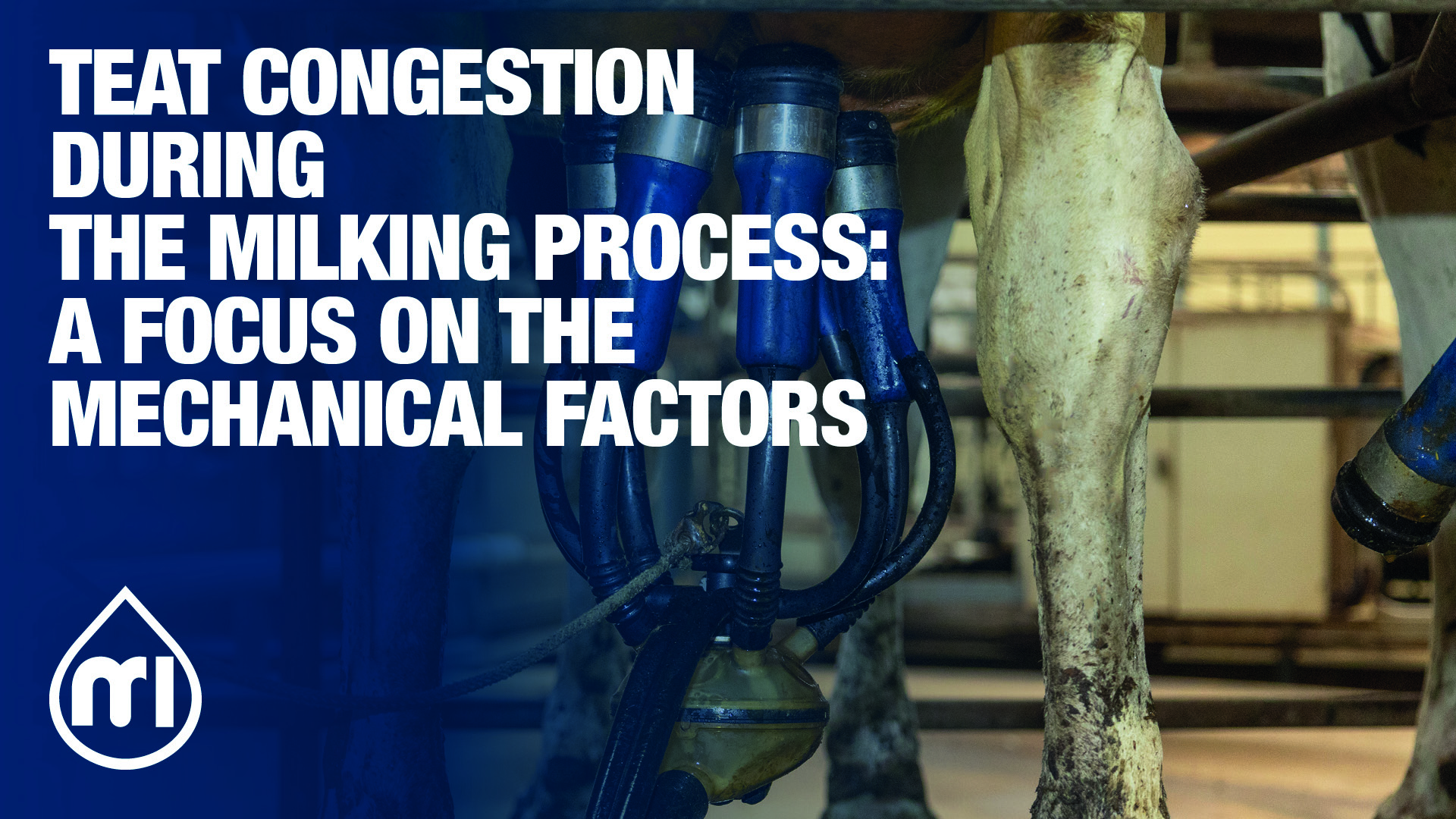
Teat congestion during the milking process: a focus on the mechanical factors
In the previous episode, we honed in on the key causes of teat congestion. Among these, mechanical factors play a significant role in its development.
They primarily relate to the function and settings of the milking machines, as well as the physical condition of the equipment in direct contact with the cow’s teats. Understanding these elements is crucial for preventing teat congestion and ensuring the efficient and humane extraction of milk.
Milking machine settings
Vacuum levels
High vacuum pressure: the vacuum level in the milking system is critical for effective milk extraction. A standard vacuum level is typically set between 12 to 14 inches of mercury (Hg). If the vacuum level is too high, it can cause excessive mechanical force on the teat, leading to tissue oedema and congestion. But this also depends on the type of parlour installation (low line or high line) on the farm.
Low vacuum pressure: conversely, if the vacuum is too low, it may cause incomplete milk removal, leading to residual milk retention and potential teat congestion due to increased internal pressure.
Pulsation setting
Pulsation ratio: the pulsation ratio refers to the cyclic alternation between the milking phase (when vacuum is applied) and the rest phase (when the liner collapses). An ideal ratio is usually around 60:40 or 70:30. Deviations from this can result in improper milking dynamics, contributing to teat congestion.
Pulsation frequency: the speed at which the pulsator cycles should be maintained within the range of 45 to 60 cycles per minute. Incorrect pulsation speeds can lead to uneven milk flow and increased mechanical stress on the teat tissues.
Liners
Liner material and design
Material: liners made of suboptimal materials can cause excessive friction and pressure on the teats. Silicone or rubber liners with the right elasticity are preferred to minimize tissue damage.
Shape and design: liners should be designed to fit the teat properly. Poorly designed liners can cause uneven pressure distribution, leading to localized tissue damage and congestion. Liners with the wrong dimensions for the herd can also increase the issue.
Liner Condition
Wear and tear: over time, liners can become worn out and lose their flexibility. Worn liners may not collapse properly during the rest phase, causing continuous vacuum application and resulting in teat congestion.
Replacement schedule: regularly replacing liners according to the manufacturer’s guidelines is essential for maintaining optimal milking conditions.
Milking clusters and cluster alignment
Cluster weight
Balanced weight distribution: heavy milking clusters can exert downward pressure on the teats, especially if not balanced correctly. This can lead to mechanical stress and congestion.
Cluster support: using cluster supports or balancing arms can help distribute weight evenly and reduce the mechanical load on the teats.
Alignment and attachment
Correct attachment: proper alignment and attachment of the milking cluster are crucial to avoid twisting or pulling of the teats. Misaligned clusters can create uneven vacuum application and increase the risk of teat congestion.
Automatic cluster removal: implementing automatic cluster removers can help prevent over-milking by detaching the cluster once milk flow decreases to a certain level, thereby reducing mechanical stress on the teats.
Over-milking and machine-on time
Duration of milking
Optimal milking duration: prolonged machine-on time can lead to over-milking post-milking, where the teats are exposed to vacuum for extended periods even after milk flow has ceased. This can cause significant mechanical stress and congestion. Poor release of milk at the beginning of milking can also cause over-milking pre-milking.
Monitoring milk flow: using sensors to monitor milk flow and employing automatic cluster removers can help ensure that milking is terminated at the appropriate time, minimizing the risk of over-milking.
Management strategies to mitigate impact
The key points for maintaining teat health in dairy cows include regular calibration and liner replacement for milking machines, monitoring cows for signs of teat congestion, using proper milking techniques with optimal vacuum levels and appropriate pulsation rates, and providing teat care through the use of disinfectant teat dips and moisturizers to protect the teat skin from infections and damage.
Managing teat congestion in a herd requires timely mitigation actions. Consider the following key points:
Milking Machine Maintenance
Regular calibration: ensuring that the milking machine is properly calibrated with optimal vacuum levels and pulsation rates can prevent excessive mechanical stress on the teats.
Liner replacement: regularly replacing teat cup liners to maintain their elasticity and fit can reduce friction and pressure on the teats.
Monitoring and intervention
Observation: regularly observing cows for signs of teat congestion and addressing any issues promptly can prevent complications.
Veterinary care: in severe cases, veterinary intervention may be necessary to treat the inflammation and prevent secondary infections.
Proper milking techniques
Optimal vacuum levels: ensure the milking machine operates at optimal vacuum levels to prevent excessive stress on the teats.
Appropriate pulsation rates: use appropriate pulsation rates to mimic natural suckling and reduce mechanical stress.
Teat care
Teat dips: use disinfectant teat dips to reduce bacterial load and protect the teat skin from infection.
Moisturizers: apply teat conditioners or moisturizers to keep the teat skin supple and reduce the risk of cracking and damage.
Conclusion
Teat congestion poses a significant challenge in dairy farming, impacting both animal well-being and milk production. It can impede milk flow in dairy cows by narrowing the teat canal, affecting the let-down response, and leading to issues such as increased residual milk and mastitis risk.
Dairy farmers can improve management and preventive measures by understanding the physiological changes, visible symptoms, functional impairments, and potential complications related to teat congestion.
Mechanical factors play a crucial role in maintaining teat health during the milking process. Regular maintenance and calibration of milking machines, along with the use of well-designed and properly maintained liners, can substantially decrease teat congestion.
It is crucial to monitor and adjust milking machine settings promptly to ensure an efficient and udder-friendly milking process. Addressing these mechanical factors allows dairy farmers and veterinarians to collaborate in promoting optimal udder health and milk production.
